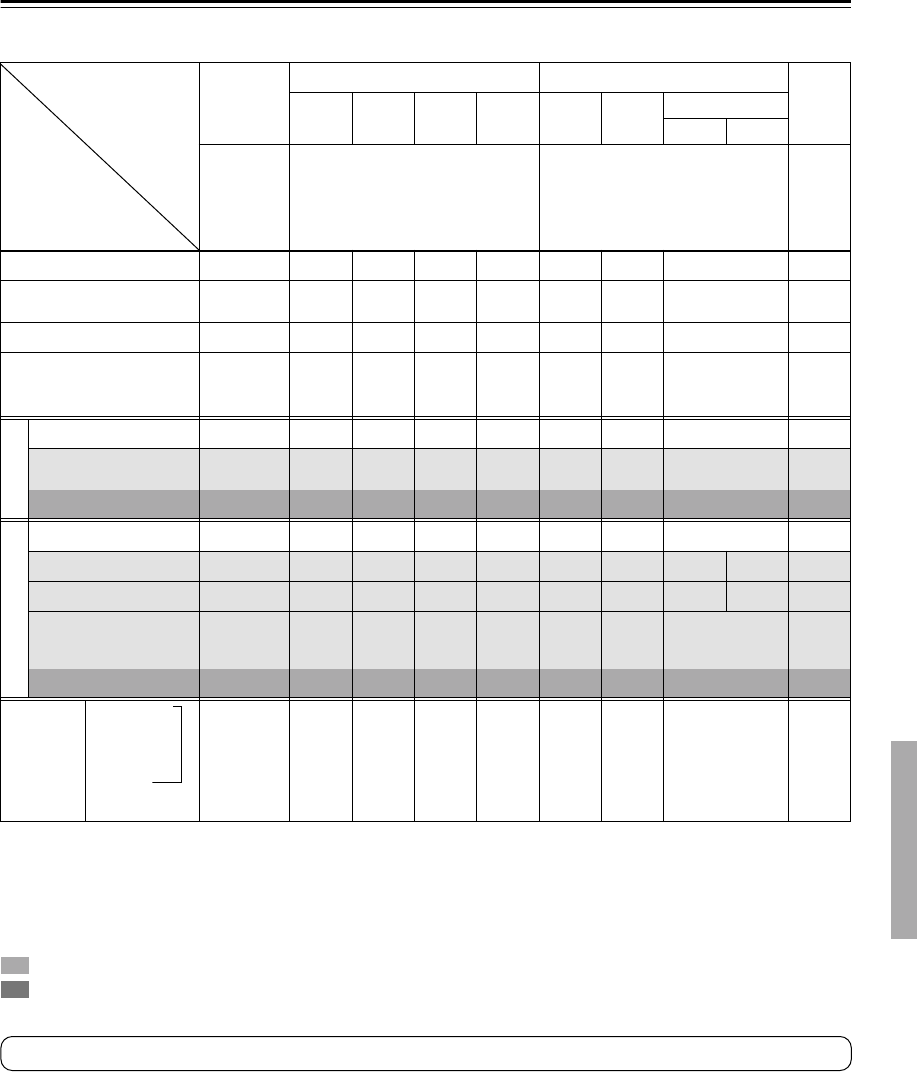
45
Using the Listening Modes—Continued
The following table shows which listening modes can be used with each input signal format.
: Not available when the Surr Back parameter is set to None, or while speaker set B is on.
: Not available when the Surr Back parameter is set to None or 1ch, or while speaker set B is on.
Source Format
Listening mode
Analog,
PCM
*1
*1. In the Direct listening mode, PCM signals at 32 kHz, 44.1 kHz, and 48 kHz are processed at 64 kHz, 88.2 kHz, and 96 kHz respectively. For listening
modes other than Direct and Stereo, 96 kHz signals are processed at 48 kHz.
Dolby D
DTS/DTS 96/24
*2
*2. In the Direct, Stereo, and DTS 96/24 listening modes, signals are processed as DTS 96/24. Everything else is processed as DTS.
Multich
3/2.1
2/2.1
2/0
(Stereo)
1/0,1+1 Other 3/2.1
2/0
(Stereo)
DTS-ES
Discrete Matrix
CD, TV, VHS,
MD,
turntable,
radio,
cassette,
DTV, etc.
DVD, DTV, etc. DVD, CD, etc. DVD
Direct
✔ ✔✔✔✔✔✔ ✔ ✔
Stereo
Mono
✔ ✔✔✔✔✔✔ ✔
Multich
✔
PLIIx Movie/Music/Game
*3
Neo:6 Cinema
Neo:6 Music
*4
*3. If the Surr Back parameter is set to None, or speaker set B is on, PLII is used.
*4. Available only when Surround speakers are connected.
✔✔ ✔
Dolby
Dolby D
✔✔
Dolby D EX
Dolby D+PLIIx Music
✔
Dolby D+PLIIx Movie
✔
DTS
DTS, DTS 96/24
✔
✔
*5
*5. If the Surr Back setting is set to None, or speaker set B is on, DTS is used.
DTS-ES Discrete
✔
DTS-ES Matrix
✔
DTS+Neo:6
DTS+Dolby EX
DTS+PLIIx Music
✔
DTS+PLIIx Movie
✔
Onkyo
Original
DSP
Mono Movie
Orchestra
Unplugged
Studio-Mix
TV Logic
All Ch Stereo
Full Mono
✔ ✔✔✔✔✔✔ ✔
*4
Tip: To check the format of the digital input signal, see “Displaying Source Information” on page 35.


















